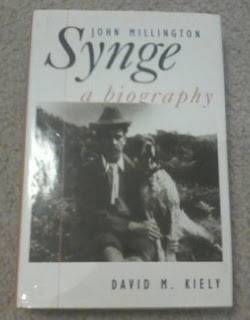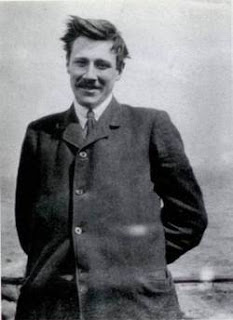This review was written on May 15th 2015
I found this book in my library recently. It had been lent to me some
years ago by Lorcan Walshe but I had not returned it to him. As I am now in my ninety fourth year I thought it worth reading as I find myself thinking about
the prospect of death more frequently; but Becker’s book seemed too complex and too impractical to face
what is an inevitable and straightforward event. For example some of the
comments by critics in the introduction to the book were as follows:-
--A magnificent psychophilosophical
synthesis of power and insight;
-- A masterful
articulation of the limitations of psychoanalysis;
-- will be acknowledged as
a major work;
- -unfolding of a mind
grasping of new possibilities and forming a new synthesis;
-- One of the great new
books of the 20th or other centuries;
-- astonishing insights
into the theories of Sigmund Freud, Otto Rank, Soren Kierkegaard, Carl Jung,
Erich Fromm and other giants; etc,
etc.
The other five commentators write very much along such lines but I
stopped my reading of the text on page 35 of the 315 pages as I reckoned that my
own purpose in facing death and in preparing my mind for the event will not be
served by any of the more theoretical and philosophical aspects of dying as
provided by the author of this masterpiece. Nor in the final analysis was my
concern about myself of any significance but rather a wider concern about the
fate of family, friends, and humanity in general and the world we live in.
I suppose it was about 2 years or so ago when I began
to think regularly about death and its approach. My thoughts included a melange
of uncertainty, curiosity and melancholy but not of fear. As time passed the
sense of curiosity began to dominate my feelings rather than that of melancholy. I have already noted my physical,
mental, social and psychological changes which have taken place and which have
been the principal features of
aging during the third stage of life,
although it is difficult to say when
this stage started, it was certainly later than the date of official
retirement. These changes I have
described in some detail in my 4th edition of My Challenge to Ageing
which was brought up to date on Kindle in 2014.
I have been fortunate that I have never suffered any
serious illness during my lifetime apart from a few remediable injuries. There
has been a slow and barely noticeable loss of physical strength in later years,
now accelerating in the last year or two, and there has been a gradual and
often erratic deterioration in other functional and physical aspects of my life.
They include hearing and vision, dry eyes and dryness of the mouth at night, appetite
reduction, sensitivity to cold and alcohol, erratic sleeping patterns, a
reduction and ultimately cessation of sex, and a tendency to cramps, particularly unpleasant in the hands after
long standing use of books and now the iPad and Kindle.
Mood and other psychological and social changes are
inevitable as one gradually loses touch with wider society and particularly as
one’s contemporaries and old friends pass gradually from the scene. However, despite the social and physical
changes of ageing, isolation need not prevent us seeking access to the
activities provided by family and others, and taking advantage of such means of
communication as radio and television, not to mention the computer, the Ipad
and the Kindle. I still maintain my regular walking programme although now reduced
to about four times a week and perhaps for a distance of about one to two miles.
I am careful to avoid accidents – the stairs, the footpaths, the house lighting
and the loose rug. I have no obvious
reduction in my intellectual abilities in terms of speech and writing although
my initiative to write a new blog has diminished during the last year or two. It seemed such an easy task until
recently. I am now more inclined to forget a name, particularly of a person,
flower or tree which I am familiar with but which I cannot recall because of a
sudden and unexpected confusion in an attempt to identify the word.
Of course, to return to the subject of one’s attitude
to death, the limitations imposed by ageing, whether physical, situational, psychological,
are factors in themselves which must influence one’s attitude. One might clearly welcome death as a
relief if life becomes more isolated and less tolerant and relevant in the minds
of others of a different age and society.
 |
| Blogger and Editor |
I have followed a life-style which not only leads to
longevity but which greatly reduces the length and severity of decrepitude which
is still too common among our older community. Appropriate adaptation to the normal changes of ageing is
mandatory. If we can remain active
during the third stage of life and if we accept the inevitable changes which
occur at this time; we will continue to have some influence in society despite
hearing and sight changes, and loneliness and loss of friends and family. The
elderly should be dealt with by education, adaptation and understanding. It is
surprising how the occasional ‘phone call from family and close friends can
maintain our touch with society.
Have I any regrets in recent years? Yes, it was our inability to influence
humanity about the major disaster which is facing our children and other living
things as we are rapidly destroying the natural world on which we depend for
our survival. In my short time of 93 years hundreds of animal and plant species
have disappeared from the earth and continue to do so. Because the changes are gradual we are
not aware of them. Even more rapid changes are ignored. Witness the abrupt loss
of the Passenger Pigeons in the United States (as per a previous blog) with
little comment or concern by the public! During my 93 years the human population has increased by more
than three times and continues at a rate of 80 million a year. The drying up of
water in rivers and lakes, and
changes in the oceans presage physical changes which may be incompatible with
life as we know it now. Carbon changes too will make life intolerable. The increase of carbon in the atmosphere
during the last century is a substantial and glaring warning to us and it is evidently
increasing at a semi-exponential rate. It will have a dire effect on living things
sooner than we think. Our politicians are represented by an electorate which is
deeply committed to wealth, social standing, personal wellbeing, power and comfort,
and a disregard for our natural world. We therefore cannot expect our politicians to lead us in our
defence of Nature and the future of humanity. Who else can do so? They cannot
deal with the symptoms of disaster let alone its causes – the declining morale
and the poverty of some nations, our reaching for the sky in search of wealth, the
overcrowding, the Mediterranean problem, the religious and internal political
wars, and most of all the continued increase in the human population and the
easy availability of the nuclear bomb when the problems of overcrowding and a
decaying environment become intolerable. Hopefully the immediate forthcoming Paris
conference will wake us up and our leaders too!


















